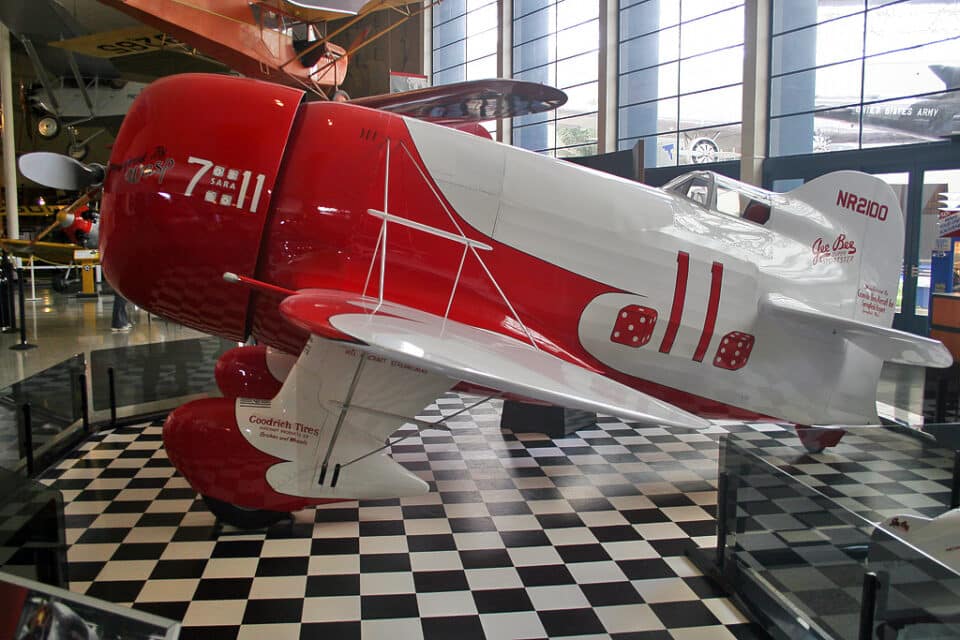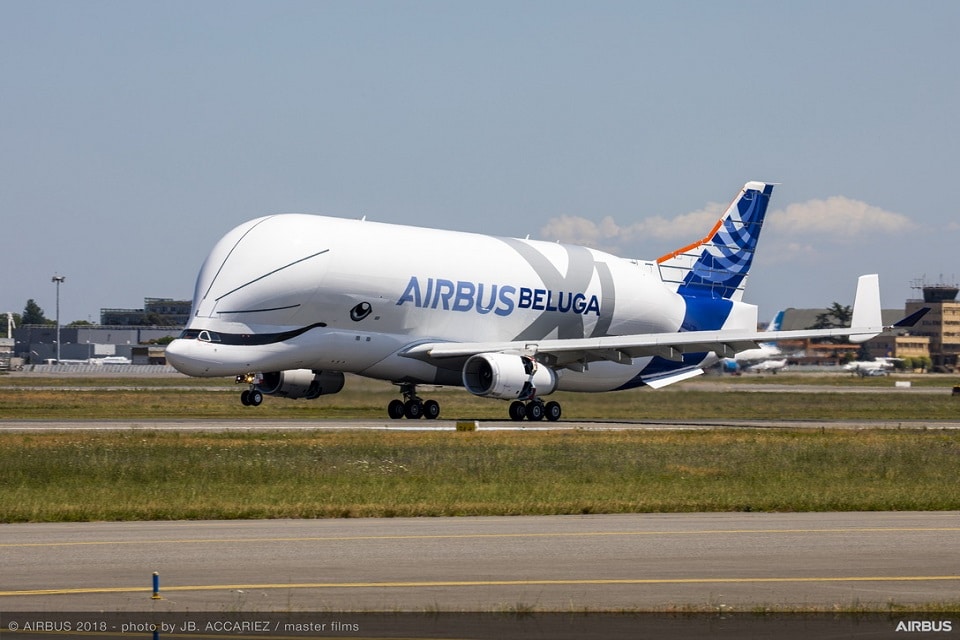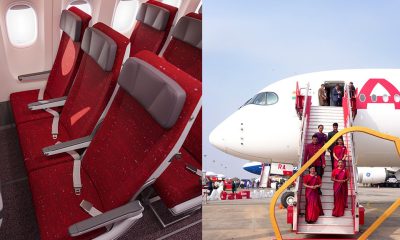Aerospace
Worlds Ugliest Aircraft
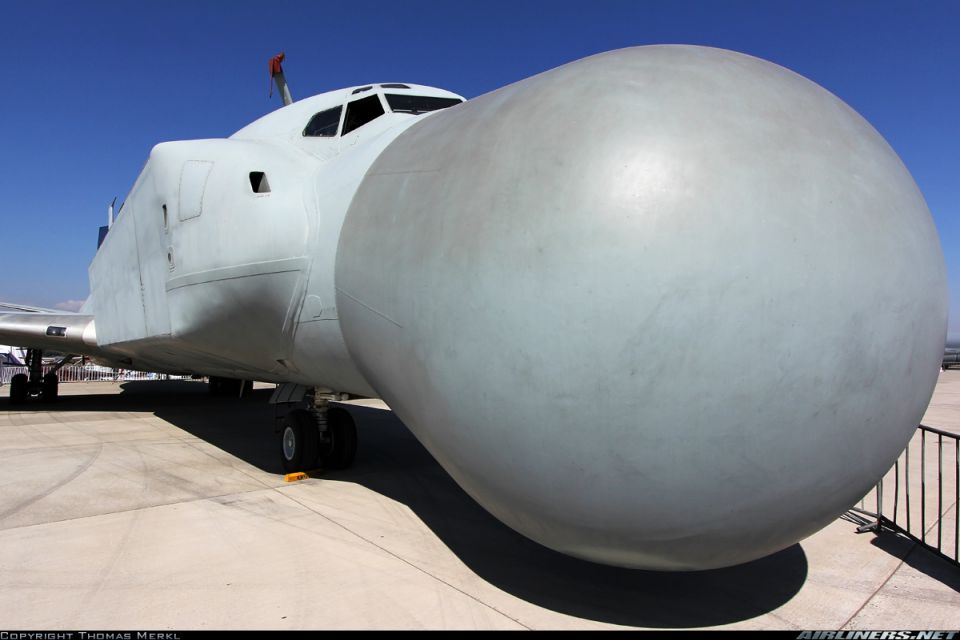
The Super Guppy
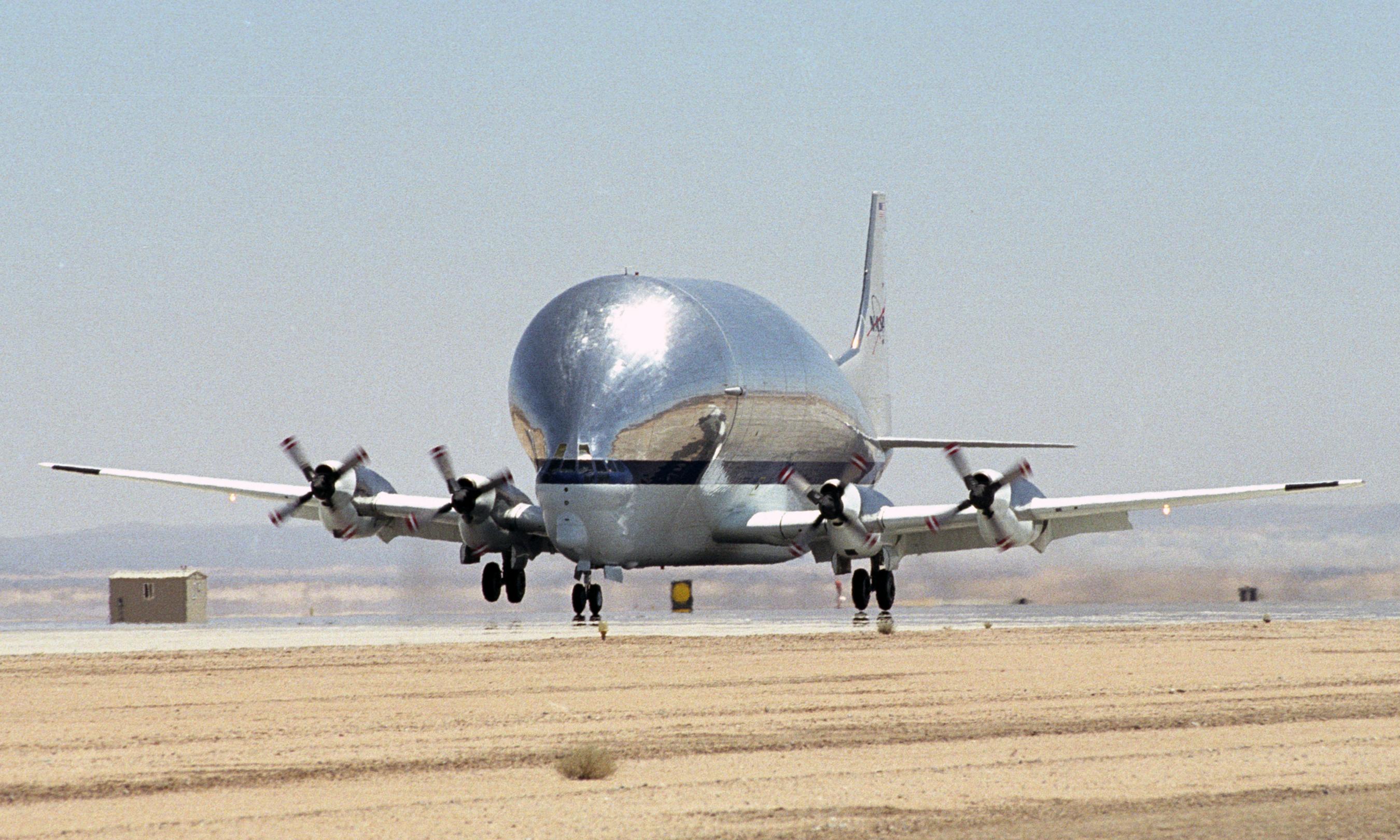 Courtesy: Wikipedia
Courtesy: Wikipedia
The Aero Spacelines Super Guppy is a large, wide-bodied cargo aircraft that is used for hauling outsize cargo components. It was the successor to the Pregnant Guppy, the first of the Guppy aircraft produced by Aero Spacelines. Five were built in two variants, both of which were colloquially referred to as the “Super Guppy”
[adinserter block=”1″]
The first, the Super Guppy, or “SG”, was built directly from the fuselage of a C-97J Turbo Stratocruiser, the military version of the 1950s Boeing 377 “Stratocruiser” passenger plane. The fuselage was lengthened to 141 feet (43 m), and ballooned out to a maximum inside diameter of 25 ft (7.6 m), the length of the cargo compartment being 94 ft 6 in (28.8 m). The floor of the cargo compartment was still only 8 ft 9 in (2.7 m) wide, as necessitated by the use of the Stratocruiser fuselage.
In addition to the fuselage modifications, the Super Guppy used Pratt & Whitney T-34-P-7 turboprop engines for increased power and range, and modified wing and tail surfaces. It could carry a load of 54,000 pounds (24,494 kg) and cruise at 300 mph (480 km/h).
[adinserter block=”12″]
De-Havilland-DH-106-Comet-C4-aircraft

Courtesy: Wikipedia
The de Havilland DH.106 Comet was the world’s first commercial jet airliner. Early Comet models suffered from metal fatigue, causing a string of accidents. The redesigned Comet 4 series enjoyed a long and productive career of over 30 years.Was operated by Royal Aircraft Establishment Bedford on Nimrod AEW radar trials. The aircraft was later scrapped at Bedford.
[adinserter block=”13″]
McDonnell XF-85
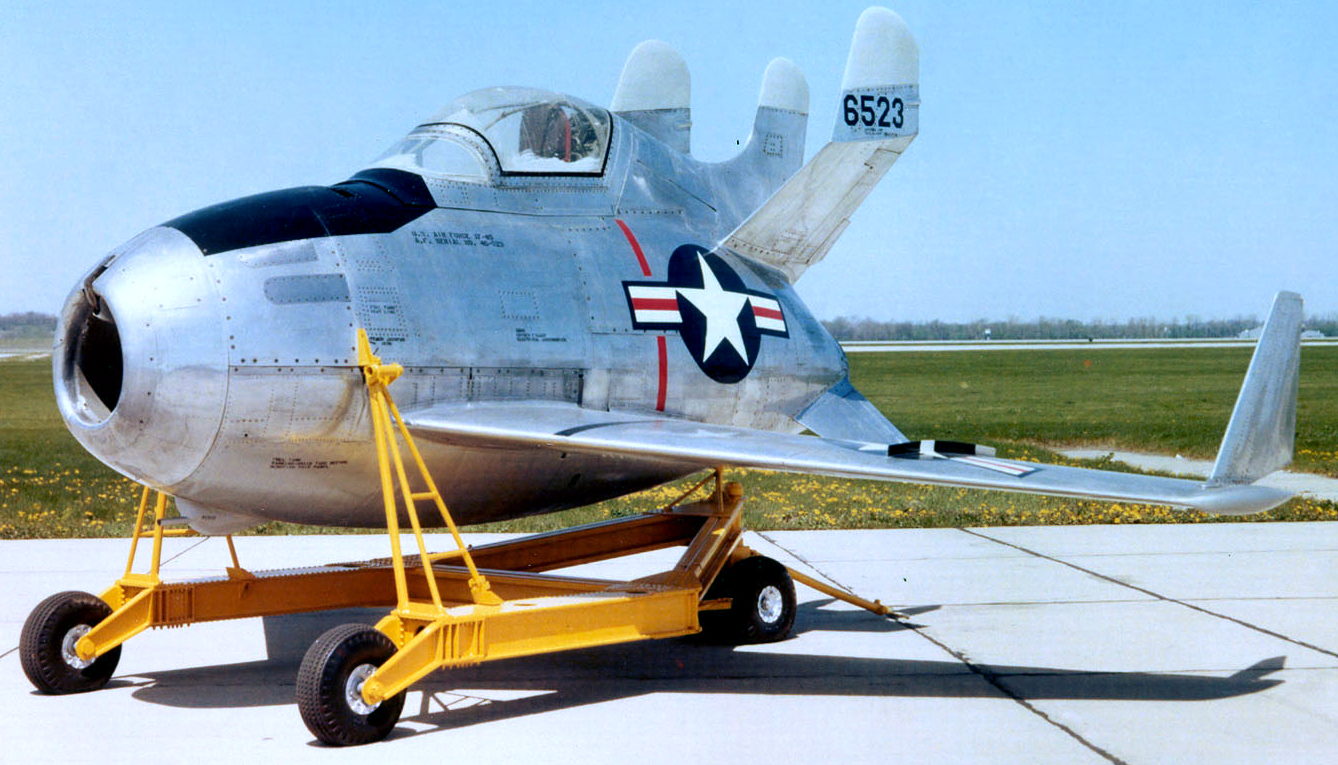
McDonnell XF-85 Goblin – Wikipedia
The McDonnell XF-85 Goblin was an American prototype fighter aircraft conceived during World War II by McDonnell Aircraft. It was intended to be deployed from the bomb bay of the giant Convair B-36 bomber as a parasite fighter. The XF-85’s intended role was to defend bombers from hostile interceptors, a need demonstrated during World War II. Two prototypes were constructed before the program was terminated.
[adinserter block=”12″]
Transavia PL-12 Airtruk

Courtesy: Wikipedia
The Transavia PL-12 Airtruk is a single-engine agricultural aircraft designed and built by the Transavia Corporation inAustralia. The Airtruk is a shoulder-wing strut braced sesquiplane of all-metal construction, with the cockpit mounted above a tractor engine and short pod fuselage with rear door. The engine cowling, rear fuselage and top decking are of fibreglass. It has a tricycle undercarriage, the main units of which are carried on stub wings. It has twin tail booms with two unconnected tails. Its first flight was in 22 April 1965, and was certified on 10 February 1966The Airtruk is also sometimes known as the Airtruck. Because the name “Airtruck” was registered by the New Zealand companies Bennett Aviation Ltd and Waitomo Aircraft Ltd, for their PL-11, Transavia found another name for their PL-12 (“Airtruk”)
[adinserter block=”2″]
The PL-11 Airtruck

Courtesy: Wikipedia
[adinserter block=”3″]
The PL-11 Airtruck was in fact a successful crop-duster, appreciated by the pilots who flew it for a living. Only two were built, in New Zealand, but some of the 118 examples of its successor, the Australian Transavia PL-12 Airtruk, are still at work all over the world. The Airtruck and Airtruk were designed for a specific job—aerial application—rather than adapting a conventional airplane to the task. The pilot was placed high above both the engine and the chemicals hopper, rather than sitting between them waiting to be crushed in a crash, and the perch gave him a superb view for low-level maneuvering.
The Deux-Ponts
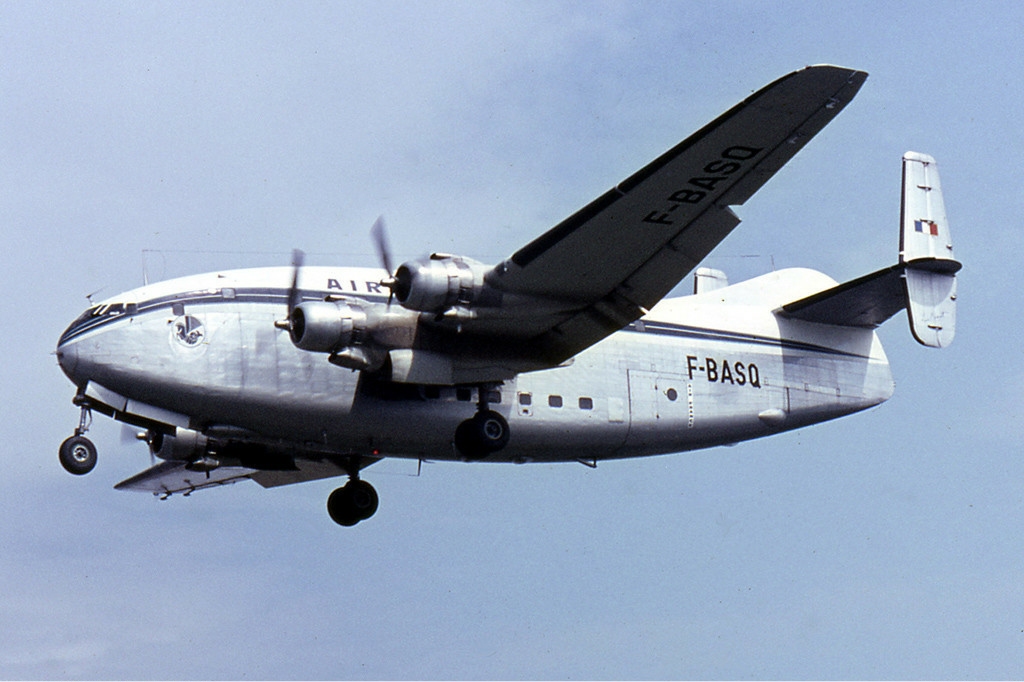
Courtesy: Wikipedia
If the Lockheed Constellation was a dolphin, the Deux-Ponts was a manatee. Yet it was an excellent airplane, flying for Air France, the French Armée de l’Air and a few smaller operators from 1952 through 1971. With two full passenger decks, it could seat 135 in a pinch, substantially more than its only double-deck competition, the Boeing 377 Stratocruiser—which in fact had only a partial lower deck configured as a cocktail lounge. But it was unpressurized and had a capacity far beyond what any airline of the time needed.
[adinserter block=”2″]
Short Sturgeon SB3

Courtesy: Wikipedia
The Short Sturgeon was a planned British carrier-borne reconnaissance bomber whose development began during Second World War with the S.6/43 requirement for a high-performance torpedo bomber, which was later refined into the S.11/43 requirement which was won by the Sturgeon. With the end of the war in the Pacific production of the aircraft carriers from which the Sturgeon was intended to operate was suspended and the original reconnaissance bomber specification was cancelled
[adinserter block=”12″]
Boeing – Phalcon 707

Courtesy: Wikipedia
The EL/M-2075 is a solid-state L-band conformal array radar system for use on a Boeing 707 and other aircraft. Phalcon, as the complete AEW mission suite is referred to, is intended for airborne early warning, tactical surveillance of airborne and surface targets and intelligence gathering. It also integrates the command and control capabilities needed to employ this information
[adinserter block=”12″]
The system can be fitted to a number of aircraft, including the Boeing 707, Boeing 767, Boeing 747 series aircraft. Under a contract signed with Chile in 1989, the first Phalcon system to be installed was fitted to a former LanChile Boeing 707, and was first flown in 1993. In May 1994 the aircraft was delivered to the Chilean Air Force, where it is known as the Condor.
Avro Shackleton
Courtesy: Wikipedia
The Avro Shackleton was a British long-range maritime patrol aircraft for use by the Royal Air Force (RAF) and the South African Air Force (SAAF). It was developed by Avro from the Avro Lincoln bomber, itself being a development of the famous wartime Avro Lancaster bomber. The type is named after the polar explorer Sir Ernest Shackleton.
[adinserter block=”2″]
Entering service with the RAF in 1951, the Shackleton was used primarily in the anti-submarine warfare (ASW) and maritime patrol aircraft (MPA) roles; it also became used as a search and rescue (SAR) platform and for performing several other secondary roles such as being a troop-transport. In later life, a small number of the RAF’s Shackletons were subsequently adapted for airborne early warning (AEW) duties, performing in this capacity until the type’s retirement in 1991. The Shackleton was also procured by South Africa, and would be operated by the SAAF between 1957 and 1984.
RAF victor
The Handley Page Victor was a Britishjet-power edstrategic bomber, developed and produced by the Handley Page Aircraft Company, which served during the Cold War. It was the third and final of the V-bombers operated by the Royal Air Force(RAF), the other two V-bombers being the Avro Vulcan and the Vickers Valiant. The Victor had been developed to perform as part of the United Kingdom’s airborne nuclear deterrent. In 1968, the type was retired from the nuclear mission following the discovery of fatigue cracks, which had been exacerbated by the RAF’s adoption of a low-altitude flight profile to avoidinterception.
Classic Collections
GeeBee
The Gee Bee Model R Super Sportster was a special purpose racing aircraft made by Granville Brothers Aircraft of Springfield, Massachusetts at the now-abandoned Springfield Airport (Massachusetts). Gee Bee stands for Granville Brothers. The 1932 R-1 and its sister plane, the R-2, were the successors of the previous year’s Thompson Trophy-winning Model Z.
[adinserter block=”1″]
hughes XH-17 , helicopter

Courtesy: Wikipedia
The XH-17 “Flying Crane” was the first helicopter project for the helicopter division of Hughes Aircraft. The XH-17, which had a two-bladed main rotor system with a diameter of 134 feet (41 m), was capable of flying at a gross weight of more than 50,000 pounds (23,000 kg).
[adinserter block=”1″]
How has Boeing’s B787 dreamliner turned into a nightmare?
Kamov Ka-226

Courtesy: Wikipedia
The Kamov Ka-226 “Sergei” is a small, twin-engined Russian utility helicopter. The Ka-226 features an interchangeable mission pod, rather than a conventional cabin, allowing the use of various accommodation or equipment configurations. The Ka-226 entered service in 2002.
[adinserter block=”1″]
‘No need to revamp the cockpit crew alerting system in B737 max 10’ – Boeing
Boeing Dream Lifter

Courtesy: Wikipedia
Who will win the Indian Navy’s new fighter jet contract? F/A 18 or Rafale
The Boeing 747 Dreamlifter (formerly Large Cargo Freighter or LCF) is a wide-body cargo aircraft. Cargo is placed in the aircraft by the world’s longest cargo loader. It is an extensively modified Boeing 747-400 and is used exclusively for transporting 787 aircraft parts to Boeing’s assembly plants from suppliers around the world.
The Beluga

Courtesy: Wikipedia
The Airbus A300-600ST (Super Transporter) or Beluga, is a version of the standard A300-600 wide-body airliner modified to carry aircraft parts and oversized cargo. It was officially called the Super Transporter at first, but the name Beluga became popular and has now been officially adopted.
[adinserter block=”12″]

Airbus The BelugaXL delivers an “extra-large” role for its team
In 1991 Aérospatiale and DASA, two of the major Airbus partners, formed a company to develop a replacement. The starting point was the design for the wide-body twin-enginedAirbus A300: the wings, engines, landing gear, and the lower part of the fuselage are the same as the A300 while the upper part of the fuselage is an enormous horseshoe-shaped structure 7.7 m (25 ft) in diameter
[adinserter block=”13″]
They are ugly but their work contribution towards Aviation industries is Tremendous and Unique , We love this aircraft all time.
Source: Respective-companies-media-press. Wikipedia,
Twitter: #Worlds_Ugliest_Aircraft.
Share this Article to your friends and Family.

Aerospace
China Secures Production Certificate for Mass Production of Pilotless eVTOL Aircraft

The first passenger-carrying pilotless electric vertical takeoff and landing (eVTOL) aircraft in the world, the EH216-S, has received the Production Certificate for its eVTOL aircraft from the Civil Aviation Administration of China (CAAC).
This is a significant milestone for EHang Holdings Limited, the leading UAM technology platform company in the world. This outstanding accomplishment is another big step towards mass manufacturing for the eVTOL aircraft and the ensuing commercial operations, building on the ground-breaking acquisition of the Type Certificate and the Standard Airworthiness Certificate for the EH216-S.
The PC is a crucial certificate that the aircraft maker receives from the CAAC, the country’s aviation authority. By obtaining this certificate, EHang has demonstrated that it has set up a quality management system for mass production that satisfies the airworthiness regulation standards set forth by the CAAC, and the company has been given permission to continue producing mass quantities.
It is also a strong guarantee of the calibre of the goods made by EHang. Raw materials, supplier management, manufacturing organisation, production quality control, aircraft pre-delivery test, after-sales repair and maintenance, etc. are all included in the mass production quality management system for the EH216-S.
To ensure that every aircraft and its components that roll off the production line strictly adhere to the approved type design and safety requirements, the system sets clear guidelines and documentation for every step in the production procedure. This ensures comprehensive traceability and safety control.
Aerospace
Four Airbus A380 Superjumbos lined up to be scrapped

In a strategic move aimed at reclaiming valuable resources from the iconic Airbus A380 aircraft, VAS Aero Services and Dr. Peters Group have announced a significant collaboration.
This partnership marks a milestone in aviation logistics and aftermarket services, with four of these colossal planes slated for teardown and redistribution of used serviceable material (USM).
The venture between VAS Aero Services, renowned for its expertise in aircraft dismantlement, and Dr. Peters Group, a prominent Germany-based investment fund management firm, underscores a commitment to sustainable aviation practices. This isn’t their first foray into scrapping A380s; their successful partnership has already seen the dismantlement of these aircraft, making them pioneers in this niche.
Under the agreement, the latest consignment brings the tally to eight A380s entrusted to VAS by Dr. Peters Group. Managing Director Christian Mailly of Dr. Peters Group emphasized the trust placed in VAS, citing their unparalleled capabilities in dismantlement and aftermarket sales network. It’s a strategic move in response to the growing demand for quality USM parts, particularly with the resurgence in reliance on the A380.
Notably, the teardown process will be carried out at various locations, optimizing the positioning of harvested parts to cater to different markets. While some parts will be positioned in Europe to support operators in the region and the Middle East, others will remain in the Asia-Pacific region. This meticulous strategy ensures efficient access to spare parts, benefiting MROs and airlines across these markets.
The decision to retire these A380s comes at a time when operators are reassessing fleet strategies amidst evolving market dynamics. Despite initial plans for quick retirement due to the emergence of more fuel-efficient alternatives, factors such as a rebound in long-haul demand and delays in new widebody deliveries have prompted operators to reconsider. The A380, with its unique capacity and capabilities, presents a practical solution for short-term capacity management.
Aerospace
Rolls-Royce Launches Test Flights for Revolutionary Pearl 10X Engine
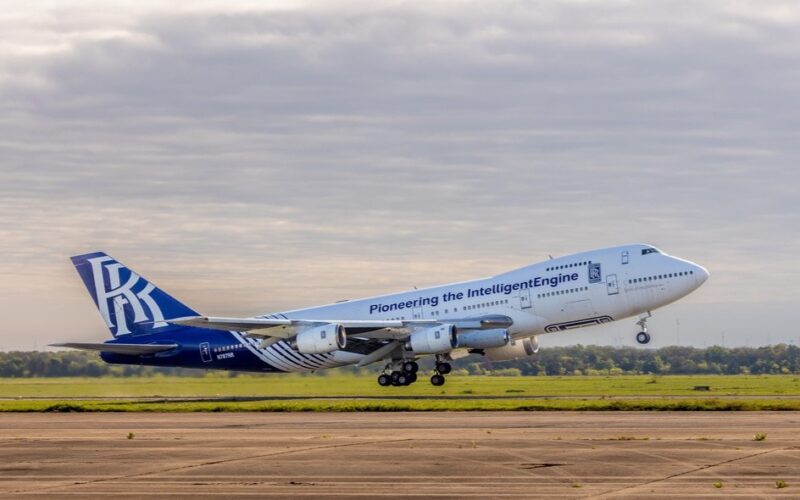
Rolls-Royce reports that the company’s dedicated Boeing 747 flying testbed has seen the successful start of the Pearl 10X, their newest aero engine designed for the business aviation industry.
Dassault, a French aircraft manufacturer, has decided to use this engine only to power their newest flagship, the Falcon 10X. As stated at last year’s Capital Markets Day, the commencement of flight testing represents a significant milestone for both Rolls-Royce and the Pearl 10X programme as the company concentrates on expanding in the business aviation industry.
The first Rolls-Royce engine to power a Dassault business jet is the Pearl 10X, the newest engine in the state-of-the-art Pearl engine family. The Pearl 10X was chosen by the French aircraft manufacturer as their new flagship model, demonstrating even more of Rolls-Royce’s dominance in the business aviation engine market.
Over the next few months, pilots and flight test engineers from Tucson, Arizona, USA, will put the engine through its paces. The flight test programme will comprise testing of the nacelle’s anti-icing system, in-flight relights, engine performance and handling checks at various speeds and altitudes, and fan vibration tests at various altitudes.
The new auxiliary gearbox, which enables higher additional power extraction, and the ultra-low emissions ALM combustor, which is compatible with 100% Sustainable Aviation Fuel (SAF), have undergone extensive testing as part of the ground-based development programme thus far. The engine will be the most potent business aviation engine in the Rolls-Royce lineup. It exceeded its intended thrust levels during the very first test run. With over 2,300 testing hours successfully completed on the Pearl 10X engine configuration as well as the Advance 2 demonstration, the programme is moving forward at a rapid pace.
With the most economical engine core available for business aircraft, the Advance2 engine, coupled with a high-performance low-pressure system, gives the Pearl 10X an exceptional thrust of over 18,000 lbf. With a 5% increase in economy over the previous generation of Rolls-Royce commercial aviation engines, the Pearl 10X


